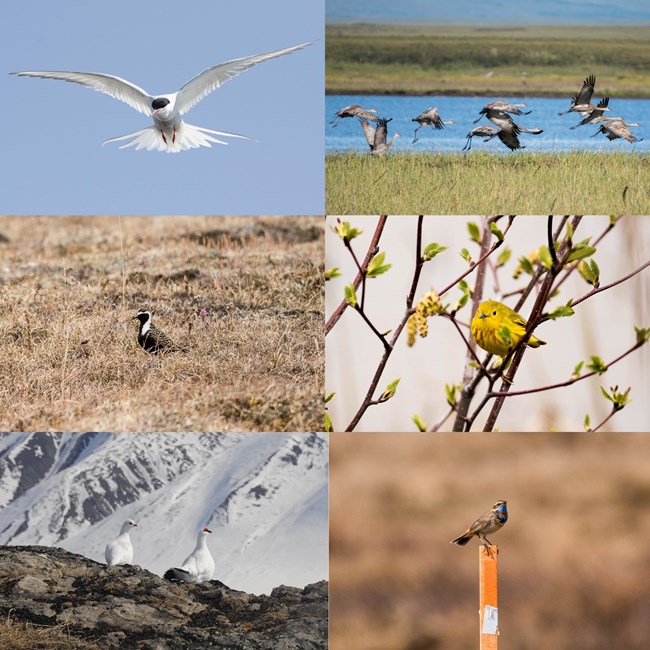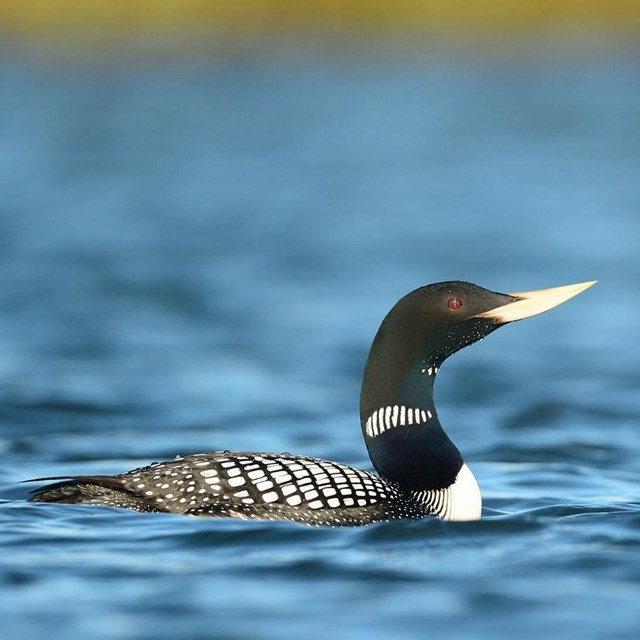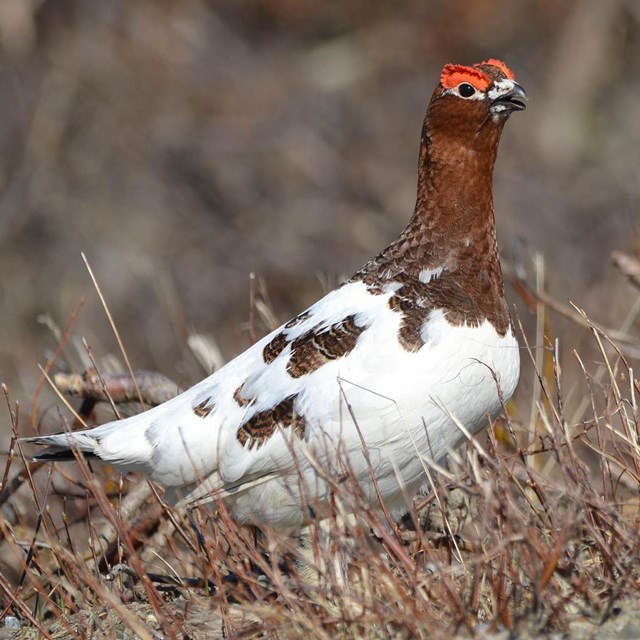
Middle row: Pacific golden plover, yellow warbler. Bottom row: Rock ptarmigan, Siberian bluethroat. NPS Photos The Seward Peninsula and Bering Land Bridge National Preserve are enviable destinations for the serious birder. The varied topography results in 21 major avian habits where birds either live, migrate, winter, or breed. The proximity of the Seward Peninsula to Eurasia also allows occasional accidentals to be spotted in this region, along with unique opportunities to observe species in the crossroad of the Asiatic-North American flyway. Combine all these elements and you have a haven of over 170 bird species! Find more information on bird viewing, birding hotspots, and identification in Alaska from the Alaska Department of Fish and Game. Some Notable Species
Learn more:
|
Last updated: January 6, 2026


